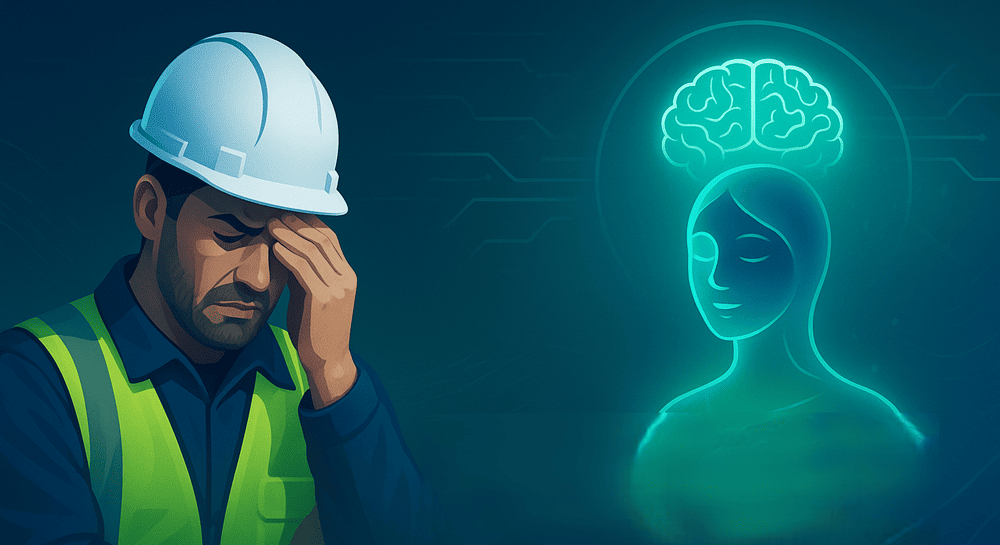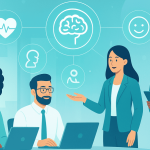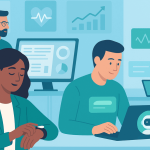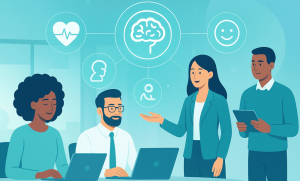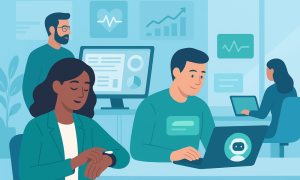Professions that are at high risk like mining, construction, emergency response, and manufacturing are typified by demanding settings, unpredictable dangers, and substantial psychological stress. That makes these sectors potentially great candidates for more effective, scalable, and accessible solutions for employee wellbeing.
As artificial intelligence (AI) continues to upend the world of work, it’s rapidly emerging as a transformative AI solution for stress in these industries.
Understanding Stress in High-Risk Jobs
Staff members whose jobs carry great risks are constantly confronted with the following dangers:
- Constant exposure to danger: Life-threatening situations and physical hazards exacerbate stress and anxiety.
- Lengthy and inconsistent hours: Long shifts and irregular schedules knock work-life harmony and sleeping rhythms for a loop.
- Feelings of loneliness and detachment can arise from working at isolated or dangerous locations.
- Emotional exhaustion: Being repeatedly exposed to traumatic events or high-stress circumstances amplifies the possibility of experiencing mental health issues or burnout.
Traditional Stress Management: Limitations
Ways of coping. Programs aimed at individual employees help them cope better with stress. These programs focus on:
- Assessing stress in your work and nonwork life.
- Recognizing the signs and symptoms of stress.
- Understanding the causes of your stress.
- Learning to use coping techniques.
Examples include:
- Face-to-face counseling and employee assistance programs (EAPs)
- Networks of peer support
- Workshops focused on wellness at the work location
These methods are certainly useful. However, they frequently encounter obstacles that reduce their effectiveness. These obstacles include stigma; limited access for workers; a lack of personalization; and scaling problems that make it hard to deliver them across large or dispersed workforces.
How AI Is Revolutionizing Stress Management
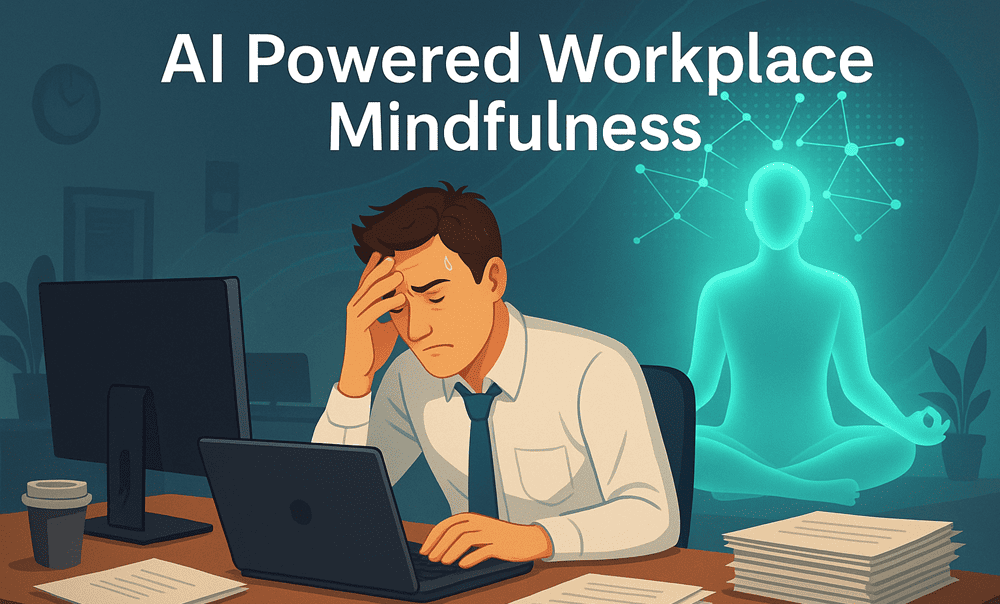
Workplace mindfulness present a new model of assisting people with mental health problems in high-risk occupations. Important advances are:
1. 24/7 Personalized Support
AI technologies enable nonstop, exhaustive coaching and resources for employees. They ensure that a non-stop, round-the-clock personalized support service is provided to every single worker, every single time, under any and all circumstances. (A non-Stop work force needs non-Stop support!)
2. Stress Detection and Intervention in Real Time
Sophisticated algorithms process behavioral data, communication patterns, and biometric inputs to pick up on the earliest signals of stress or burnout. This allows for interventions that could be characterized as a form of mental health first aid—using the best evidence we have to intervene before a person really “breaks down”—and helplines for stress or burnout.
3. Confidentiality and Reduced Stigma
Digital AI coaches provide a judgment-free arena; in this modern workplace, employees can engage with an AI life coach without the worry that someone will see them making an appointment. In fact, some digital coaches even suggest practicing in private. And really, what could be more private than embracing a digital assistant?
4. Scalable, Adaptive Solutions
Platforms powered by AI can conveniently serve vast and widely dispersed teams, altering content and guidance to meet the individual needs and cultural contexts of team members. This adaptability is especially critical for the sorts of high-risk industries that employ such diverse and mobile workforces.
5. Organization-Driven Insights for Data
Aggregated and anonymized data from AI systems help employers pinpoint stress trends, assess how well their intervention programs work, and create healthier work environments—without giving up individual privacy.
6. Augmented Resilience via Simulation
Simulated scenarios and virtual reality environments allow employees to practice the art of crisis management and the science of resilience. In these controlled, safe environments, we hope to hone not only the leadership but also the collective performance of teams through high-stakes rehearsals.
Best Practices for Implementing AI-Powered Stress Management
For the most advantage from AI in high-risk circumstances, companies must:
- Give precedence to keeping data private: Make sure that there are strong protections for sensitive information, so that users can trust and feel comfortable being engaged.
- Incorporate with current systems: Unite AI resolutions with conventional support systems for a total system of systems.
- Cultivate a culture of support: Ensure that leadership at every level understands the programs and tools available, and models their appropriate use. Make mental health an initiative that everyone can get behind.
- Train and educate: Arm workers with the know-how they need to use AI tools well and with assurance.
How Modern AI Platforms Are Supporting High-Risk Workers
The potential of AI in stress management is demonstrated by platforms such as Wellbeing Navigator, which offer:
- Coaching that is personalized for confidence, stress, and anxiety.
- Insights driven by data and continuous learning are fine-tuned to each user.
- Employees who work from locations other than the office and workers who are on duty at unusual hours can conduct business as easily as if they were in the office.
- Guidance derived from rigorous psychological research, CBT and ICF models, and emotional intelligence algorithms.
Conclusion
Artificial intelligence, especially mental health wellbeing, is forming the future of stress management at high-risk jobs by making support far more accessible, personalized, and effective than ever before. If organizations across all industries embrace these innovations, they will be fostering safer, healthier, and more resilient workforces that allow employees to not only work in but also thrive in some of the most challenging environments.
Bring AI-Powered Wellbeing to Your Workforce
We’re here to serve high-risk industries with Wellbeing Navigator’s ultimate solution Coach Nova, providing counseling and customized solutions that deliver hope and, more importantly, results. Book a free demo and enjoy firsthand the difference that cutting-edge technology can make at your organization.

